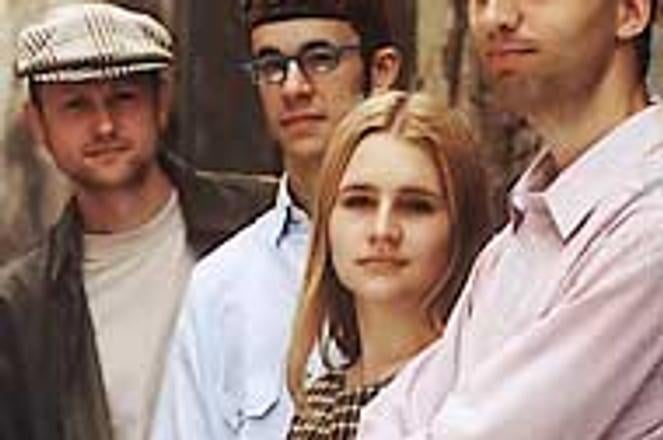PRESSBURGER Klezmer Band is reviving this long-neglected form.photo: Ctibor Bachratý
A DOCTOR, a programmer, a journalist, a lawyer, an engineer and two music students - it's not the intro to a bad joke, but an enthusiastic bunch of musicians called the Pressburger Klezmer Band, or PKB for short. A band whose music is as varied as its members' personal and professional backgrounds.
The PKB comes from Bratislava (which used to be called Pressburg during the Austro-Hungarian Empire) and plays 'klezmer' music, a traditional form that originated in eastern and central Europe and was influenced by Jewish liturgical music, Hassidic tunes and the folklore of the local non-Jewish environment. Established in 1995, the PKB is so far the only band of its kind in Slovakia, playing Jewish traditional music with a Slovak and gypsy flavour.
Having just come out with their second CD, 'Lajv' (the Slovak phonetic equivalent of the English 'live'), the band will introduce it to the Bratislava audience on September 12, sending listeners on a musical journey from Ukraine's Odessa over the Carpathian mountains to the Lower East Side.
The klezmorim (musicians playing klezmer) traditionally played at weddings and other festive occasions, and were often also hired by non-Jews. Klezmorim were often unschooled, in contrast to the members of the current PKB, all of whom received a formal musical education.
The band says their non-traditional learning allows them to arrange traditional pieces in new ways, or even to write original pieces.
"We are inspired by the traditional and popular tunes, but also listen to old and new records and look for song books. Among the bands who influenced us the most are Klezmorim, Kapelye, Brave Old World and the Conservatory Klezmer Band," says Samo Alexander, the PKB's contrabass player and singer.
The specific area where klezmer tunes and bands come from also influences their choice of instruments. The most typical instruments for klezmer, and represented in the PKB, are the clarinet with its laughing-weeping sound, as well as the violin, viola, contrabass, piano and drums. These can be accompanied by the melancholy sound of the accordion or even a trumpet or saxophone.
"In the past, the musicians simply played on the instruments that were available, and the line-ups of bands were often improvised," Alexander explains.
As a result of the mass migration of the Jewish population from Europe at the turn of the 19th and 20th centuries, klezmer found its way also to the United States. There it was enriched by jazz elements but soon fell into obscurity due to the tragedy of the second world war and the general neglect of Jewish religion and traditions.
Klezmer music's big revival came in the 1970's, since when it has started to return to the countries of its origin.
Even though klezmer is considered folk music, famous Yiddish authors such as Itsik Manger and Abraham Sutzkever are behind many of the songs' lyrics. They are sung usually in Yiddish (a mixture of German, Hebrew and Slavic elements) or exceptionally in Hebrew. Acoustic klezmer tunes, the 'nigunim', often feature an enchanting melody that can be repeated over and over again.
"We like to play live and see the response from the audience. It's great to make people dance," says Alexander.
What: Pressburger Klezmer Band concert
Where: Dom kultúry Zrkadlový háj (Zrkadlový háj House of Culture), Rovniankova 3, Petržalka.
When: September 12 at 20:00.
Tickets: Sk140-160.
For more information call 02/6381-1328 or visit www.klezmer.sk


